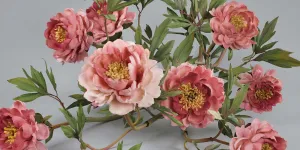Introduction
When The Frick Collection opened officially to the public on December 16, 1935, fresh flowers chosen by the founder’s daughter, Helen Clay Frick, were placed in the main ground-floor spaces. Ten days earlier, Helen Clay had relayed what she envisioned to the museum’s first director, Frederick Mortimer Clapp: a vase with thirty-six large American Beauty roses for the West Gallery, a bowl of a dozen red camellias and Talisman roses for the Library, two small vases with lilies of the valley for the Fragonard Room, two vases of lilies of the valley and forget-me-nots for the Boucher Room (then on the first floor), and yellow roses and a vase of mimosas for the Living Room. In some cases, she had chosen flowers in relation to specific works of art. Placed under Titian’s Portrait of a Man in a Red Hat, for example, a bowl with a dozen anthuriums linked the color and shape of the flowers to that of the subject’s hat. Unfortunately, there are neither photographs of the museum’s opening nor records of the flower arrangements. In the following years, fresh flowers could be seen in the galleries on a regular basis.
The idea of incorporating flowers into the Frick’s 2025 reopening was inspired largely by the desire to evoke the earlier tradition. However, today’s conservation practices preclude having fresh flowers in the galleries. The plan to make arrangements of porcelain flowers for the key spaces developed through conversations between the Frick’s curatorial team and artist Vladimir Kanevsky. Some porcelain flowers are arranged in vases and pots as cut flowers would be, while others are placed on floors and surfaces. The locations are central to this project. Kanevsky’s flowers inhabit the Frick mansion as its owners and staff did between 1914 and 1931 and as visitors do today—each creation eliciting surprise and enjoyment.
